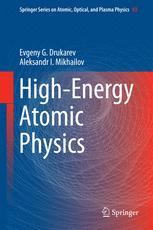

Most ebook files are in PDF format, so you can easily read them using various software such as Foxit Reader or directly on the Google Chrome browser.
Some ebook files are released by publishers in other formats such as .awz, .mobi, .epub, .fb2, etc. You may need to install specific software to read these formats on mobile/PC, such as Calibre.
Please read the tutorial at this link: https://ebookbell.com/faq
We offer FREE conversion to the popular formats you request; however, this may take some time. Therefore, right after payment, please email us, and we will try to provide the service as quickly as possible.
For some exceptional file formats or broken links (if any), please refrain from opening any disputes. Instead, email us first, and we will try to assist within a maximum of 6 hours.
EbookBell Team

4.7
36 reviewsThis self-contained text introduces readers to the field of high-energy atomic physics - a new regime of photon-atom interactions in which the photon energies significantly exceed the atomic or molecular binding energies, and which opened up with the recent advent of new synchrotron sources.
From a theoretical point of view, a small-parameter characteristic of the bound system emerged, making it possible to perform analytic perturbative calculations that can in turn serve as benchmarks for more powerful numerical computations. The first part of the book introduces readers to the foundations of this new regime and its theoretical treatment. In particular, the validity of the small-parameter perturbation expansion and of the lowest-order approximation is critically reviewed. The following chapters then apply these insights to various atomic processes, such as photoionization as a many-body problem, dominant mechanisms for the production of ions at higher energies, Compton scattering and ionization accompanied by creation of e-e+ pairs, and the photoionization of endohedral atoms (e.g. fullerene). Last but not least, the computationally challenging transitions in the electron shell during certain types of nuclear decays are investigated in detail.